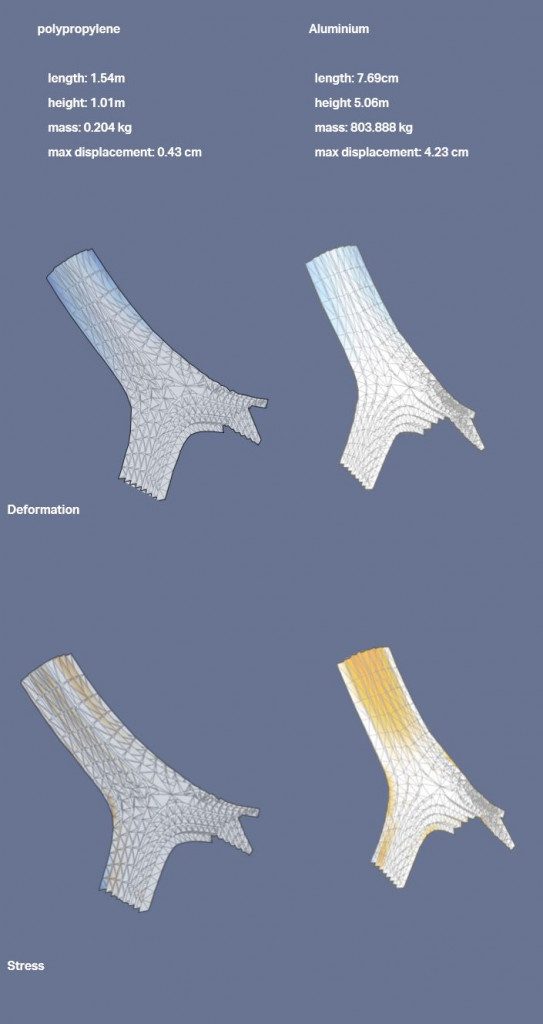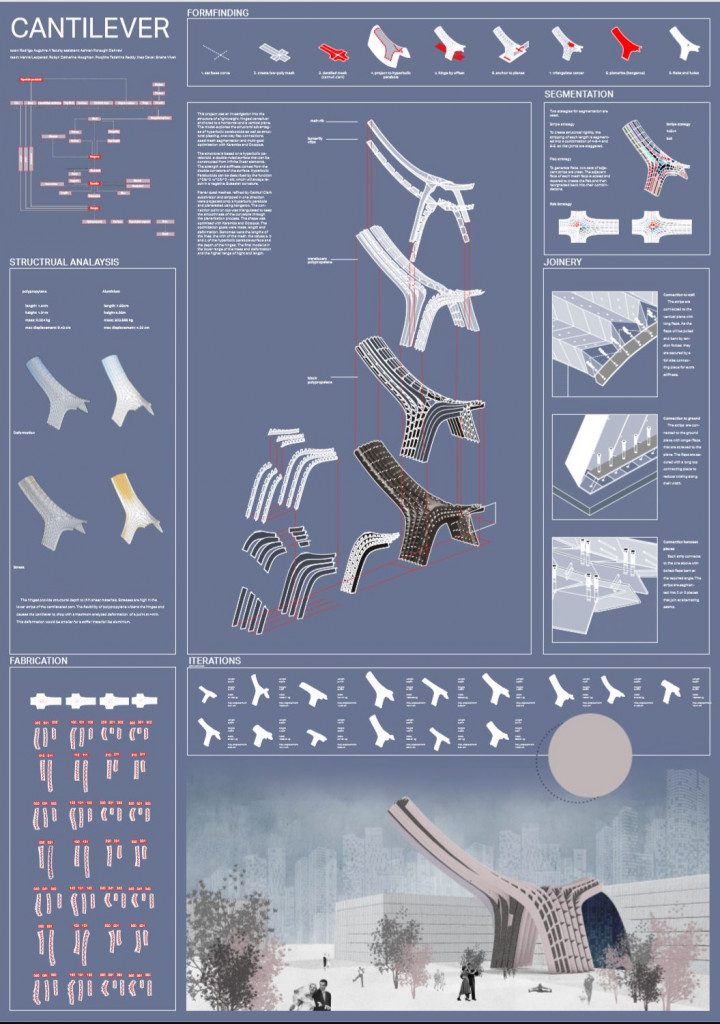concept
This project was an investigation into the structure of a lightweight, hinged cantilever anchored to a horizontal and vertical plane. The model explores the structural advantages of hyperbolic paraboloids as well as structural pleating, one-way flap connections, quad mesh segmentation and multi-goal optimization with Karamba and Octopus.
The structure is based on a hyperbolic paraboloid, a double-ruled surface that can be constructed from infinite linear elements. The strength and stiffness comes form the double curvature of the surface. Hyperbolic Paraboloids can be described by the function y^2/a^2-x^/b^2=z/c, which will always result in a negative Guassian curvature.
Planar quad meshes, refined by Catmull Clark Subdivision and stripped in one direction, were projected onto a hyperbolic parabola and planarazied using Kangaroo. The connection point on top was triangulated to keep the smoothness of the curvature through the planarization process. The shape was optimized with Karamba and Octopus. The optimization goals were mass, length and deformation. Genomes were the lengths of the lines, the width of the mesh, the values a,b and c of the hyperbolic parabola surface and the depth of the hinges. The final model is in the lower range of the mass and deformation and the higher range of height and length.
form finding

structural analysis

construction details

prototype

board

video
///
Cantilever is a project of IaaC, Institute for Advanced Architecture of Catalonia developed at Master in Advanced Architecture in 2019/2020 by: Students: Hanna Lepperød, Ines Cavar, Poojitha Tadshina Reddy, Robyn Houghton, Sneha Vivek Faculty: Rodrigo Aguirre | Faculty Assistant: Ashkan Foroughi